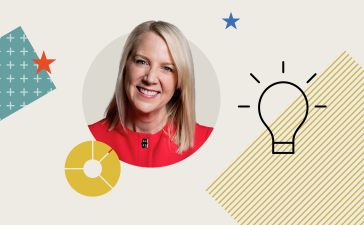
Robert Triggs / Android Authority
With hardware advancements slowing down in recent years, smartphone makers have started turning to software to set themselves apart. The latest flagship smartphones from Apple, Google, and Samsung all loudly proclaim AI as a key selling point. But even though all companies use the same underlying technology, their individual implementations couldn’t be more different. So in this Google Pixel AI vs Samsung Galaxy AI comparison, let’s dissect their unique approaches and determine which Android giant truly reigns supreme in the AI arena.
Google Pixel AI vs Samsung Galaxy AI: Photography, editing, audio
Long before the AI era, computational photography was pushing the boundaries of smartphone camera quality. Thanks to AI, that trend has only accelerated now, sometimes in bizarre ways. For example, both Google and Samsung allow you to add or remove objects from your shots.
Since this category includes many features, here’s a quick rundown of what you get from Pixel AI vs Galaxy AI:
- Image editing: The Google Photos app on Pixel and Gallery app on Galaxy smartphones includes Generative Edit, which can remove distractions. Samsung allows you to move objects from one image to another and expand images beyond their original dimensions. Both apps also let you “reimagine” or replace portions of an image with something entirely different — imagine turning a pothole into a mini volcano.
- Add Me (Pixel-exclusive): The Pixel 9 series can merge two or more photos of the same setting to stitch the photographer into the frame. The feature, dubbed Add Me, can be used to include that one person always left out of group shots.
- Audio Magic Eraser (Pixel-exclusive): While video quality has improved leaps and bounds in recent years, audio has never received the same attention. Luckily, the Google Photos app on Pixel 8 and newer devices include an Audio Magic Eraser feature that lets you remove traffic noise, wind, and other unwanted sounds after the fact.
- Video Boost (Pixel-exclusive): Modern smartphones can capture and process shots incredibly quickly, but doing the same thing for videos requires immense computing power. Since the task just isn’t possible on a smartphone, Google’s Video Boost feature uploads recorded videos to the cloud and enhances them with Night Sight and HDR+ for better lighting and clarity. It works quite well but can take hours to process a single video in my experience.
- Recorder: Both Google and Samsung use AI within their respective voice Recorder apps to transcribe and summarize recordings. This feature can condense hours-long recordings down to just a handful of bullet points, which you can then easily share or export to a different app.
- AI image generation: The Pixel 9 series ships with a dedicated image generator app dubbed Pixel Studio that can convert a few words into art. It’s a cool party trick and might be useful if you often create stickers for group chats, but the app needs an internet connection to work. Samsung doesn’t offer a competing app, although Sketch to Image can convert your S-Pen doodles into lifelike images. That said, you could just as easily use Midjourney or any other AI image generator on any phone.
Many of the features in this section, except the Recorder apps, require an internet connection and will involve sending your images to the cloud for processing.
Google Pixel AI vs Samsung Galaxy AI: Language and text
Given that modern AI can understand language as well as a human, it’s no surprise that the technology has made its way into our texting apps and digital keyboards. Here’s a quick rundown of the language-related AI features on Samsung and Google devices:
- Samsung Chat Assist: If you’re unsure about your spelling, grammar, or tone, you can enlist the help of an on-device AI model built into the Samsung Keyboard app to fix anything you’ve typed. It works in any app and the Composer feature can also be used to generate paragraphs of text in different styles like professional, casual, polite, and witty. For example, I recently tasked the AI to generate a complaint email to my utility provider — it only saved me a minute or two of typing, though.
- Proofread with Gboard (Pixel-exclusive): As the title suggests, this feature can correct grammar or punctuation errors automatically. The keyboard app will automatically surface a “Fix it” button when the on-device AI detects errors in your text. Unfortunately, it only works in the US and doesn’t support any language other than English.
- Summarize web pages: If you’re reading a long article, you can bring up the Gemini assistant on the Pixel to summarize it. Likewise, the Samsung Internet app offers AI summarize and translation buttons.
- Gboard Assistant voice typing (Pixel-exclusive): While not a new feature by any means, the Gboard app offers a much better voice dictation feature that can seamlessly transcribe your words and add punctuation without manually instructing it. It works very well in my experience, even with a heavy accent, and is almost reason enough to own a Google device.
- Pixel Screenshots: If you routinely capture screenshots to remember snippets from various apps, the Pixel Screenshots app can help you organize and search for information. You can search for text within images or ask questions like “When is my flight to Tokyo?” and get nearly instant answers based on the screenshots in your gallery. The app relies on Google’s on-device Gemini Nano model, meaning images are processed locally.
Google Pixel AI vs Samsung Galaxy AI: Phone calls
The Pixel’s Call Screening feature is not new by any means but it is an introvert’s dream — if you hate the idea of answering calls from unknown numbers, you can let AI answer the call and ask who’s calling. The other person’s responses appear on-screen and you can pick suggested replies for the AI to read out loud.
Samsung also offers a similar feature, dubbed Bixby Text Call, but the AI’s voice isn’t as polished in my experience. The upside is that you can type out responses meaning you aren’t limited to the phone’s suggestions.
In the US, the Pixel can automatically screen calls even if you’re not around your phone. Your phone will only ring if the AI has ruled out the possibility of a spam call. Samsung doesn’t offer this feature yet and cannot prompt the opposite party to leave a message. Google also introduced Call Notes with the Pixel 9, which records phone calls and generates bulleted summaries after you hang up.
The Pixel offers Call Screening for spam mitigation, while Samsung’s Live Translate lets you converse in foreign languages.
Moving on, Live Translate is one of Samsung’s headlining AI features. It allows you to have a real-time phone conversation in two completely different languages. If you speak English and the other person only knows Spanish, for example, Live Translate will automatically translate both speakers’ speech after a slight delay. This means you can have back-and-forth conversations in foreign languages without actually learning any of them. Needless to say, this feature is invaluable while traveling or living abroad.
For its part, the Pixel’s AI suite includes Direct My Call and Hold for Me — two closely related features that take the frustration out of contacting a support helpline. The former allows you to navigate IVR menus (the kind that prompts you to press numbers on your phone’s dialpad) without listening to the slow narration. Finally, Hold for Me prompts you with a vibration when a human representative returns to your call after a long hold.
None of the features in this section require an internet connection as all AI processing takes place on-device.
Google Pixel AI vs Samsung Galaxy AI: Supported countries and availability

Robert Triggs / Android Authority
While Google and Samsung have both developed extensive AI suites, feature availability remains a sore spot on Pixel devices. As someone who lives in Asia, I can attest that many of the Pixel’s best features like Call Screening simply aren’t available. This isn’t limited to AI either — the Pixel 9 Pro’s Thermometer app cannot measure body temperature where I live because Google has only received regulatory approval in some regions.
So if you live outside of the US, I’d highly recommend checking out which features you won’t have access to. Luckily, many of the photography and image editing features work globally since they don’t have to be adapted for specific languages or markets. However, many of these features (like Magic Editor) are also available on non-Google devices, giving you one less reason to buy a Pixel over a Samsung phone.
Samsung does a much better job of maintaining feature parity across the world. Galaxy AI offers Live Translate for phone calls globally, in a long list of languages, while the Pixel’s Call Screening is only available in a handful of countries.
Google Pixel AI vs Samsung Galaxy AI: Common features
Even though Google and Samsung are technically competitors looking to maximize sales of their own smartphones, they work closely with each other in other areas like software. Google maintains the Android operating system as we know it, after all, and Samsung sells the most Android-powered phones every year. This synergy extends to AI as well, with Google offering many of its AI models to Samsung and other Android brands. With that in mind, here’s a list of the AI features you’ll find on both Galaxy and Pixel devices:
- Gemini chatbot: While flagship phones from Samsung and Google both run the on-device Gemini Nano AI model, there’s also the Gemini app that you can access on any Android phone. Meant to replace the Google Assistant, this chatbot can perform a variety of tasks — it can set alarms, play music, make phone calls, and control your smart home. Therefore, if you only care about AI that can handle phone-related tasks, both Pixel and Galaxy AI will serve your needs just fine.
- Circle to Search: While Samsung announced Circle to Search at the Galaxy S24 launch event, the feature relies entirely on Google’s technologies and even lives within the search giant’s app. In a nutshell, Circle to Search allows you to look up any image or piece of text on your phone’s screen without leaving the app you’re currently in. The feature immediately made its way to Google’s Pixel line and has even started trickling to other Android brands.
- Google Photos: Recent Pixel devices have launched with timed exclusive Google Photos features that are now widely available across all Android phones, including Samsung ones. The AI-powered Magic Editor feature, for example, started out as a Pixel 8 exclusive but is now available to everyone. The only caveat is that Google limits the number of Magic Editor saves per month on non-Pixel devices. However, you can overcome this restriction as well if you subscribe to any Google One premium plan.
- Generative wallpapers: Google’s AI-powered generative wallpapers feature is available on both Pixel and Galaxy phones. Simply pick a few keywords and it will generate one-of-a-kind art that you can set as your homescreen background. It’s easy to overlook this feature, but it negates the need for a third-party wallpaper app.
It’s worth noting that many new features may arrive on the latest Pixel smartphones first. But as we’ve seen with recent additions like Gemini Live, Google tends to eventually open up access to all Android users. You may need a Gemini Advanced subscription to unlock newer features, but that’s also usually true of older Pixel devices.
Bottom line then, you can’t go wrong with either the Pixel or Galaxy AI suites. I personally prefer having access to Google’s bespoke AI features like Gboard’s Assistant-powered voice typing and Call Screening, if it’s supported where you live. However, Samsung has also stepped up its game recently — Live Translate is a must-have for me while traveling abroad and the feature parity across all countries makes it even more compelling. Which AI suite do you prefer?
Which AI suite do you prefer, Samsung’s Galaxy AI or Google’s Pixel AI?
8 votes








